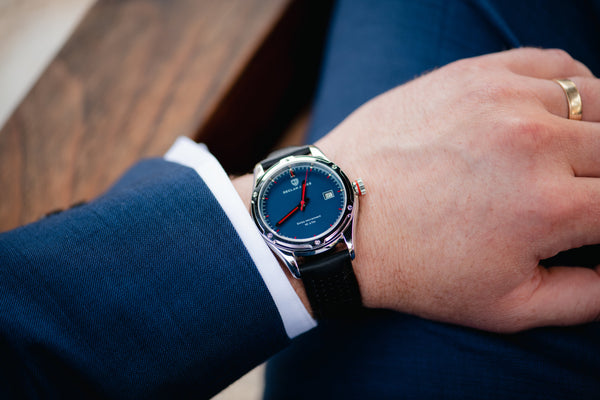Watch Crystals Explained: Sapphire, Mineral, and Acrylic Compared
Sep 14, 2025
Watch Crystals Explained: Sapphire, Mineral, and Acrylic Compared
What is the first thing you notice when you look at a watch? For many, it is the dial design or the movement inside. But the part you are looking through, the watch crystal, is one of the most important and overlooked components of any timepiece.
The crystal is the clear cover that protects your dial and hands from scratches, dust, water, and impact. It is the lens that connects you to the watch itself. The type of crystal a brand uses not only affects how a watch looks but also how it performs and how it ages over time. In this guide, we will break down the three main types of watch crystals: acrylic, mineral glass, and sapphire, so you can decide which one is the best watch crystal for your lifestyle.
A Brief History of Watch Crystals
In the early days, wristwatches were fitted with acrylic or mineral crystals. They were affordable and functional but prone to scratches and damage. As watchmaking evolved, sapphire crystals entered the scene, bringing durability and clarity that redefined standards for luxury watches. Today, the type of crystal used can signal whether a watch is designed for rugged everyday wear, vintage charm, or high-end precision.
The Three Main Types of Watch Crystals
Acrylic Crystals
Acrylic is the traditional option. Lightweight, inexpensive, and highly shatter resistant, it was once the industry standard. The downside is obvious: scratches. But here is the catch, most scratches can be polished out with relative ease. Collectors and vintage enthusiasts love acrylic crystals for their warm look and slightly domed profile, which gives a nostalgic character to older timepieces.
Mineral Glass Crystals
Mineral glass is the middle ground. More durable than acrylic and harder to scratch, it provides clear visibility of the dial at a reasonable cost. However, it is not immune to damage. A sharp impact can cause chips or cracks, and once broken, a mineral crystal usually needs to be replaced rather than repaired. For many entry level and mid range watches, mineral glass strikes the right balance between durability, affordability, and clarity.
Sapphire Crystals
The sapphire watch crystal is considered the gold standard. Second only to diamond in hardness, sapphire is extremely scratch resistant and maintains its clarity for decades. Many luxury brands add anti reflective coatings to sapphire, making the dial look sharp and legible even under harsh light. The tradeoff is cost. Sapphire is more expensive to produce and replace if damaged. Still, for anyone who values long term durability and premium quality, sapphire is hard to beat.
Why Watch Crystals Matter
The watch crystal is more than a protective shield, it defines how you experience the watch.
- Acrylic adds a vintage, warm character.
- Mineral glass offers everyday practicality.
- Sapphire delivers unmatched clarity and resistance to scratches.
For dive watches, the crystal is critical for keeping water out under intense pressure. For dress watches, it shapes the way light interacts with the dial. In either case, the crystal is essential to both performance and aesthetics.
Final Word
The next time you admire a watch, take a moment to appreciate the crystal. It is more than just a piece of glass or plastic; it is the lens through which you connect with your watch. The movement may keep time, but the crystal lets you see time. And in the world of watches, that is worth more than a passing glance.

